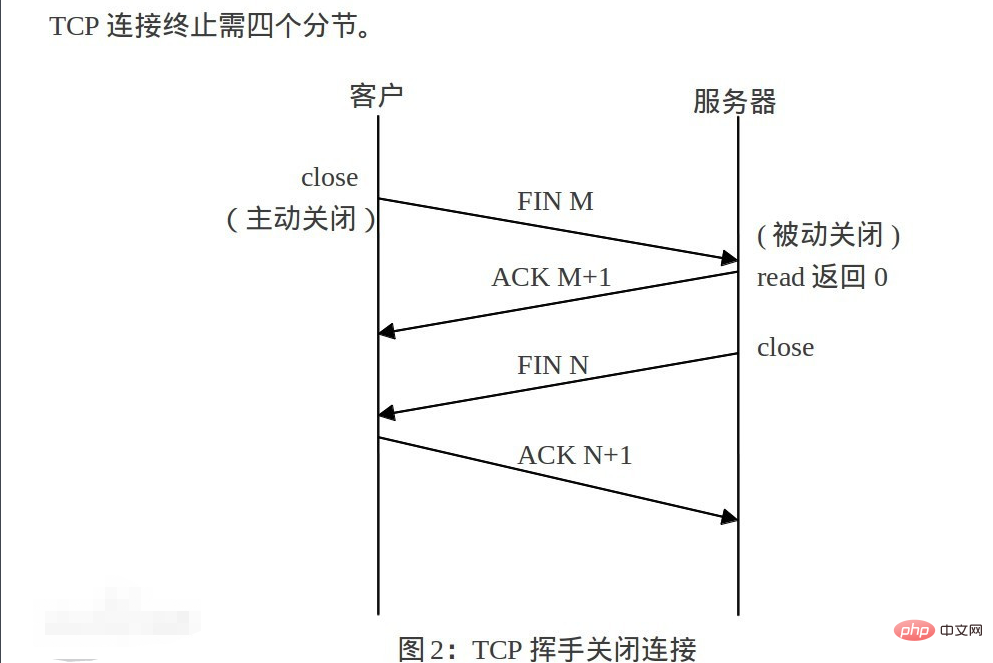What is the meaning of ip and tcp in internet protocol
In the Internet protocol, ip refers to the Internet Protocol, which is the core of the entire TCP/IP protocol family and the basis of the Internet; tcp refers to the transmission control protocol, which is a connection-oriented A reliable, byte stream-based transport layer communication protocol. The purpose of designing IP is to improve the scalability of the network: first, to solve Internet problems and realize the interconnection of large-scale and heterogeneous networks; second, to separate the coupling relationship between top-level network applications and underlying network technologies to facilitate the two. Develop independently.

The operating environment of this tutorial: Windows 7 system, Dell G3 computer.
In Internet protocols, ip refers to the Internet Protocol (Internet Protocol), and tcp refers to the Transmission Control Protocol (Transmission Control Protocol).
ip protocol
IP is the abbreviation of Internet Protocol and is the network layer protocol in the TCP/IP system. The purpose of designing IP is to improve the scalability of the network: first, to solve Internet problems and realize the interconnection of large-scale and heterogeneous networks; second, to separate the coupling relationship between top-level network applications and underlying network technologies to facilitate the two. Develop independently. According to the end-to-end design principle, IP only provides a connectionless, unreliable, best-effort packet transmission service to the host.

IP is the core of the entire TCP/IP protocol suite and the foundation of the Internet. IP is located in the network layer of the TCP/IP model (equivalent to the network layer of the OSI model). The upper layer can carry information of various protocols in the transport layer, such as TCP, UDP, etc.; the lower layer can put IP information packets into the link layer. , transmitted through various technologies such as Ethernet and Token Ring networks.
In order to adapt to heterogeneous networks, IP emphasizes adaptability, simplicity and operability, and makes certain sacrifices in reliability. IP does not guarantee the delivery time and reliability of packets. The transmitted packets may be lost, duplicated, delayed or out of order.
tcp protocol
Transmission Control Protocol (TCP, Transmission Control Protocol) is a connection-oriented, reliable, byte stream-based transport layer communication protocol. Defined by IETF's RFC 793.
TCP is designed to accommodate a layered protocol hierarchy that supports multiple network applications. TCP is relied upon to provide reliable communication services between pairs of processes in a host computer connected to different but interconnected computer communication networks. TCP assumes that it can obtain simple, possibly unreliable datagram services from lower-level protocols. In principle, TCP should be able to operate on top of a variety of communications systems, from hardwired connections to packet-switched or circuit-switched networks.

To read more related articles, please visit PHP Chinese website! !
The above is the detailed content of What is the meaning of ip and tcp in internet protocol. For more information, please follow other related articles on the PHP Chinese website!

Hot AI Tools

Undresser.AI Undress
AI-powered app for creating realistic nude photos

AI Clothes Remover
Online AI tool for removing clothes from photos.

Undress AI Tool
Undress images for free

Clothoff.io
AI clothes remover

Video Face Swap
Swap faces in any video effortlessly with our completely free AI face swap tool!

Hot Article

Hot Tools

Notepad++7.3.1
Easy-to-use and free code editor

SublimeText3 Chinese version
Chinese version, very easy to use

Zend Studio 13.0.1
Powerful PHP integrated development environment

Dreamweaver CS6
Visual web development tools

SublimeText3 Mac version
God-level code editing software (SublimeText3)

Hot Topics
 1386
1386
 52
52
 How do websites set black/whitelist IP restrictions and country and city IP access restrictions through nginx?
Jun 01, 2023 pm 05:27 PM
How do websites set black/whitelist IP restrictions and country and city IP access restrictions through nginx?
Jun 01, 2023 pm 05:27 PM
1. Black/white list IP restricted access configuration nginx There are several ways to configure black and white lists. Here are only two commonly used methods. 1. The first method: allow, denydeny and allow instructions belong to ngx_http_access_module. nginx loads this module by default, so it can be used directly. This method is the simplest and most direct. The setting is similar to the firewall iptable. How to use: Add directly to the configuration file: #Whitelist settings, followed by allow is accessible IPlocation/{allow123.13.123.12;allow23.53.32.1/100;denyall;}#Blacklist settings,
 What does binding ip and mac mean?
Mar 09, 2023 pm 04:44 PM
What does binding ip and mac mean?
Mar 09, 2023 pm 04:44 PM
IP and mac binding refers to associating a specific IP address with a specific MAC address, so that only the device using the MAC address can use the IP address for network communication. Binding ip and mac can prevent the IP address of the bound host from being spoofed. Prerequisites: 1. The MAC address is unique and cannot be spoofed; it can only be bound to hosts on the network directly connected to the router (that is, The host's gateway is on the router).
 How to reset tcp/ip protocol in win10? How to reset the tcp/ip protocol stack in windows 10
Mar 16, 2024 am 11:07 AM
How to reset tcp/ip protocol in win10? How to reset the tcp/ip protocol stack in windows 10
Mar 16, 2024 am 11:07 AM
How to reset tcp/ip protocol in win10? In fact, the method is very simple. Users can directly enter the command prompt, and then press the ctrl shift enter key combination to perform the operation, or directly execute the reset command to set it up. Let this site do the following. Let us carefully introduce to users how to reset the TCP/IP protocol stack in Windows 10. Method 1 to reset the tcp/ip protocol stack in Windows 10. Administrator permissions 1. We use the shortcut key win R to directly open the run window, then enter cmd and hold down the ctrl shift enter key combination. 2. Or we can directly search for command prompt in the start menu and right-click
 How to check IP address on WeChat
May 31, 2023 am 09:16 AM
How to check IP address on WeChat
May 31, 2023 am 09:16 AM
How to check the IP address on WeChat: 1. Log in to the computer version of WeChat, right-click the taskbar at the bottom of the screen, and click "Task Manager"; 2. When the task manager pops up, click "Details" in the lower left corner; 3. Task management Enter the "Performance" option of the browser and click "Open Resource Monitor"; 4. Select "Network" and check the WeChat process "Wechat.exe"; 5. Click "TCP Connection" below to monitor the WeChat network IP related situation. Sending a message and getting a reply will reveal the other person's IP address.
 How to set directory whitelist and ip whitelist in nginx
May 18, 2023 pm 03:52 PM
How to set directory whitelist and ip whitelist in nginx
May 18, 2023 pm 03:52 PM
1. Set the directory whitelist: There is no restriction on the specified request path. If there is no restriction on the request path to the api directory, it can be written as server{location/app{proxy_passhttp://192.168.1.111:8095/app ;limit_connconn20;limit_rate500k;limit_reqzone=fooburst=5nodelay;}location/app/api{proxy_passhttp://192.168.1.111:8095/app/api}}#Because nginx will give priority to accurate matching
 What should I do if my wifi shows no IP allocation?
Aug 30, 2023 am 11:58 AM
What should I do if my wifi shows no IP allocation?
Aug 30, 2023 am 11:58 AM
Solution to wifi showing no IP allocation: 1. Restart the device and router, turn off the Wi-Fi connection on the device, turn off the device, turn off the router, wait a few minutes, then reopen the router to connect to wifi; 2. Check the router settings and restart DHCP, make sure the DHCP function is enabled; 3. Reset network settings, which will delete all saved WiFi networks and passwords. Please make sure they are backed up before performing this operation; 4. Update the router firmware, log in to the router management interface, and find the firmware Update options and follow the prompts.
 How does NGINX count the PV, UV, and independent IP of the website?
May 19, 2023 am 09:13 AM
How does NGINX count the PV, UV, and independent IP of the website?
May 19, 2023 am 09:13 AM
Concept: uv (uniquevisitor): unique visitor, each independent Internet computer (based on cookies) is regarded as a visitor, and the number of visitors who visit your website within a day (00:00-24:00). Visits to the same cookie within a day are only counted once PV (pageview): visits, that is, page views or clicks, each visit to the website by the user is recorded once. When a user visits the same page multiple times, the total number of visits is counted. Independent IP: The same IP address is only counted once within 00:00-24:00. Friends who do website optimization are most concerned about this. Let me first state the environment. This run nginx version 1.7, the backend tomcat runs dynamic
 How to use TCP to implement conversation between client and server in python
May 17, 2023 pm 03:40 PM
How to use TCP to implement conversation between client and server in python
May 17, 2023 pm 03:40 PM
TCP client A client sample code that uses the TCP protocol to achieve continuous dialogue: importsocket#Client configuration HOST='localhost'PORT=12345#Create a TCP socket and connect to the server client_socket=socket.socket(socket.AF_INET,socket .SOCK_STREAM)client_socket.connect((HOST,PORT))whileTrue:#Get user input message=input("Please enter the message to be sent:&



